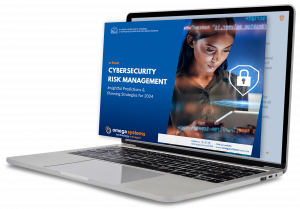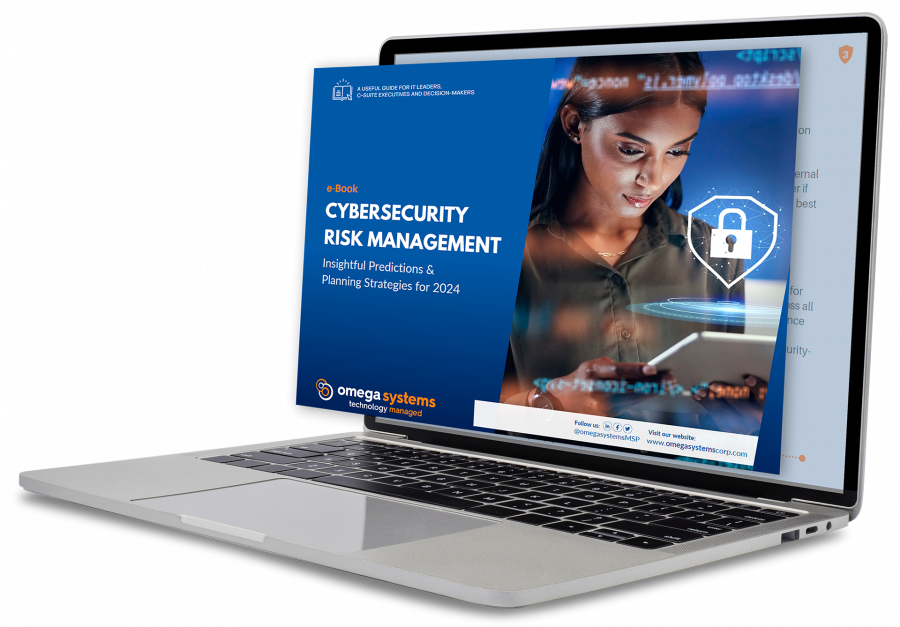
Picture this: your organization’s critical files encrypted, operations grinding to a halt, and a faceless adversary demanding a hefty ransom for their release. This is the sinister reality of ransomware, a malicious software that infiltrates computer systems, holding invaluable data hostage until a payment is made.
In 2022 alone, organizations all around the world detected 493.33 million ransomware attempts. As businesses increasingly rely on digital platforms and interconnected networks, the impact of ransomware has become more pronounced, posing not just a financial threat but also jeopardizing reputations, customer trust, and the very foundation of operational continuity.
In this article, we delve into the grim threat of ransomware, exploring its nature, the challenges it presents, and the imperative steps businesses must take to shield themselves from this ever-evolving menace.
Ransomware Detection Methods
Detecting ransomware requires a multifaceted approach due to its chameleon-like ability to adapt. Victims typically discover the malware only after receiving the ransom demand, as it stealthily stays hidden until files are encrypted and rendered inaccessible. This emphasizes the critical importance of early detection.
The swifter an attack is identified, the more secure your data remains. Combining three primary methods – signature-based, behavior-based, and abnormal traffic-based detection – significantly enhances the effectiveness of ransomware detection and prevention.
1. DETECTION BY SIGNATURE: UNMASKING THE FAMILIAR FACES
One traditional method involves using signatures – unique digital fingerprints that identify known malware. This signature-based ransomware detection technique serves as a first level of defense, relying on a database of predefined signatures containing domain names, IP addresses, and other indicators that identify it. This enables anti-virus software to recognize and quarantine malicious code. However, the rapid evolution of ransomware poses a growing challenge for this approach, as new strains continually emerge with modified signatures.
How it works: This method relies on known patterns or signatures of known ransomware strains. Anti-virus software uses these signatures to identify and block threats.
Pros: Effective against known malware and ransomware campaigns that are general, rather than targeted.
Cons: Limited to detecting known variants; may miss new or evolving ransomware.
2. DETECTION BY BEHAVIOR: DECODING ANOMALIES IN ACTION
Instead of relying on predefined signatures, a behavior-based detection method analyzes new behaviors against historical data to identify potential indicators of compromise. For instance, the detection system may flag an abnormal scenario, such as an employee logging in from a remote location immediately after logging in from the office. This method also includes measuring abnormal file system changes and examining API calls for suspicious commands. By recognizing deviations from normal behavior, organizations can pinpoint potential ransomware threats even if the specific malware variant is unfamiliar.
How it works: This method monitors the behavior of programs and processes in real-time. It looks for actions common to ransomware, such as unusual login activities and mass file encryption, and can detect previously unknown threats.
Pros: Effective against new and unknown ransomware; less reliant on specific signatures.
Cons: May produce false positives; may be less effective against adaptive ransomware.
3. DETECTION BY ABNORMAL TRAFFIC: FOLLOWING THE DIGITAL FOOTPRINTS
Ransomware frequently connects with external servers during its operation, either to obtain encryption keys or to report its success. Abnormal traffic detection, an advanced extension of behavior-based detection, operates at the network level to identify unusual patterns and connections. This detection technique is particularly effective for sophisticated ransomware attacks that not only encrypt large amounts of data for ransom but also pilfer data before encryption for extra leverage. Despite ransomware’s attempts to conceal these transfers, abnormal traffic detection can trace substantial data movements to external systems, enabling security officers to track and remove the ransomware from the affected machine.
How it works: This approach monitors network traffic for unusual patterns or connections to external servers, signaling potential ransomware infections.
Pros: Works against sophisticated attacks and can detect new or evolving ransomware variants.
Cons: May generate false positives; requires careful analysis due to potential evasion tactics by attackers.
Combining these three detection methods creates a robust defense against ransomware.
The Benefits of Ransomware Prevention
The impact of a ransomware attack reaches beyond the immediate financial strain of ransom payments. Businesses of all sizes face incalculable expenses, challenges, and the risk of reputational damage when targeted by malicious actors. Implementing robust ransomware detection and prevention measures not only safeguards organizations from financial repercussions but also provides benefits such as effective time management and enhanced data protection.
Mitigating Financial Consequences
The FBI strongly advises against ransom payments, as they can be exorbitant and often provide no guarantee of data recovery. In fact, 65% of victims couldn’t recover all their data post-attack. Not only can paying the ransom lead to additional extortion fees, as reported by the majority of victims, but it can also inadvertently contribute to criminal enterprises. Furthermore, it heightens the risk of sensitive information being shared on the dark web, exposing victims to further attacks. There’s also the potential for fines from the Office of Foreign Assets Control for paying specific ransomware attackers.
By investing in preventative measures, your organization can eliminate the need for such payments, redirecting resources towards more strategic and value-driven initiatives.
Avoiding System Replacement Costs
A ransomware attack has the potential to irreversibly corrupt systems and data, requiring the costly replacement of entire infrastructures. The financial implications extend beyond the physical hardware to include the time and resources required for system migration and configuration. Ransomware prevention is crucial in avoiding these unfortunate scenarios, safeguarding not only your finances but also the operational continuity of your business.
Eliminating Downtime
Time lost during a ransomware incident is an intangible yet invaluable resource. The downtime required to assess the extent of the breach, negotiate with attackers, and recover data can be crippling. Ransomware prevention strategies drastically reduce the likelihood of such downtime, allowing organizations to allocate their time and efforts toward innovation, growth, and strategic initiatives rather than reactive recovery.
Protecting Sensitive Data and Preserving Trust
The fallout from a ransomware attack can affect an organization’s reputation and undermine the crucial trust that sustains successful business relationships. The trust of clients, partners, and stakeholders is an invaluable asset, difficult to restore once compromised. Ransomware prevention not only shields sensitive data from unauthorized access but also reinforces an organization’s dedication to security. Taking a proactive stance against ransomware is more than a financial choice; it represents a strategic investment in the long-term resilience and reputation of your organization.
Ransomware Prevention Checklist
Adopting a proactive stance is imperative for businesses aiming to protect their digital assets and sensitive information. Here are key ransomware prevention strategies that go beyond traditional, reactive cybersecurity measures, ensuring a robust defense against the ever-present threat of cyber extortion.
- Perform Regular Backups. One of the most effective strategies against ransomware is regular data backups. By maintaining up-to-date and secure backups, your organization can swiftly restore your systems in the event of an attack, rendering the extortionists’ attempts futile. Automated, routine backups ensure that critical data is consistently safeguarded, minimizing the impact of a potential breach.
- Identify Weaknesses Before Attackers Do. Security-forward organizations conduct regular penetration testing (or pen testing) as well as vulnerability assessments to identify weaknesses in their systems. In a pen test, an ethical hacker is authorized to simulate real-world cyberattacks on your organization’s computer system to provide valuable insights into potential entry points for ransomware. Vulnerability assessments, on the other hand, are routine procedures conducted by security professionals to identify, detect, and report on your business’s hidden security gaps outside and inside your organization. These gaps can include misconfigurations, unauthorized devices, weak passwords, open ports, unsecured Wi-Fi networks, vulnerable third-party software, and other issues that could be exploited. Addressing these vulnerabilities preemptively strengthens your overall security posture, making it more challenging for attackers to exploit loopholes.
- Harden Your Endpoints. Endpoints, such as individual devices and servers, are often the initial targets of ransomware. Hardening these endpoints involves enhancing their security configurations, limiting unnecessary access, and implementing strict controls. Adopting a zero trust security framework can help fortify these endpoints by never assuming trust, necessitating continuous authentication and validation of user and device identity, even within the corporate network. By fortifying the front lines, your organization can create an additional layer of defense against ransomware infiltrations.
- Keep Systems Up to Date. Outdated software and systems can serve as gateways for ransomware. Regularly updating and patching software ensures that known vulnerabilities are addressed promptly. This preventative measure reduces the likelihood of exploitation, denying attackers easy access to outdated and unprotected systems.
- Train the Team. Human error remains a significant factor in ransomware attacks. Educating and training employees on cybersecurity best practices is indispensable. Awareness programs empower staff to recognize phishing attempts, suspicious links, and other potential threats, turning the entire organization into a collective defense against ransomware.
- Develop Plans and Policies. Having a well-defined ransomware response plan and comprehensive cybersecurity policies is essential. These documents outline the steps to be taken in the event of a ransomware attack, ensuring a coordinated and efficient response. A clear roadmap empowers your organization to act swiftly, minimizing the impact and potential damage caused by the attack.
STAY PROACTIVE WITH MANAGED CYBERSECURITY SERVICES
As ransomware continues to proliferate and attacker methods grow in sophistication, organizations of all shapes and sizes become susceptible targets. At Omega Systems, we recognize that no business is immune – which is why we provide support to companies across a wide variety of industries. Our commitment to safeguarding your business extends beyond data protection; it’s about defending your reputation, ensuring seamless operations, and fostering trust among customers and stakeholders.
With over two decades of award-winning expertise as an MSP and an MSSP, Omega Systems offers more than theoretical knowledge. We provide practical solutions and responsive services 24x7x365 to fortify your digital environment. Whether you require assistance in implementing preventative strategies, strengthening endpoints, or developing a robust ransomware response plan, our team of cybersecurity professionals is ready to collaborate with you.
Cybersecurity Planning for 2024
Don’t wait until the next attack. Invest in the right technologies, people, and processes now to prevent a ransomware incident in the future. Transform into a security-forward organization by reading Omega’s e-book, Cybersecurity Risk Management: Anticipating Future Trends and Planning Strategies for 2024, or contact our cybersecurity professionals today to learn more.
EDITOR’S NOTE: This article was originally posted by Omega Systems. The TNS Group joined the Omega Systems family in December 2022.
Categories: Information Technology Services, Managed Security Services, Managed Service Provider, MSP Blogs, Solution Blogs





